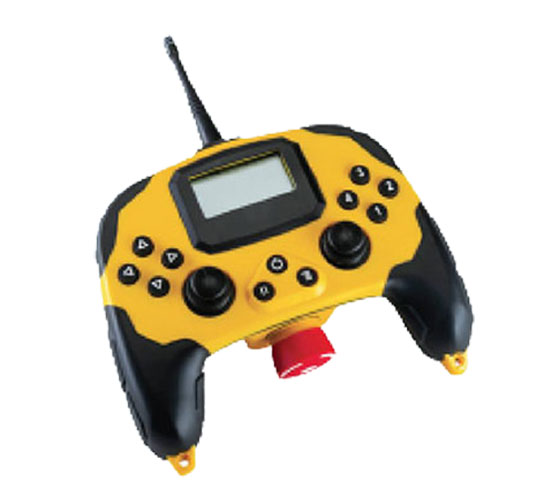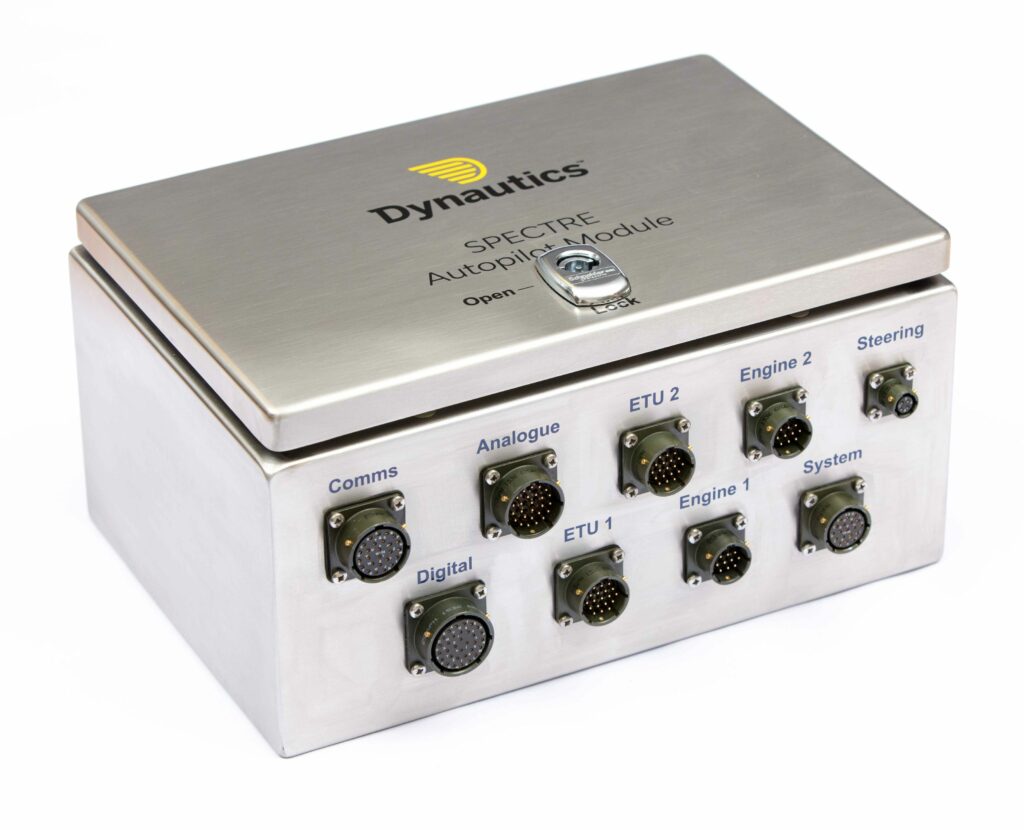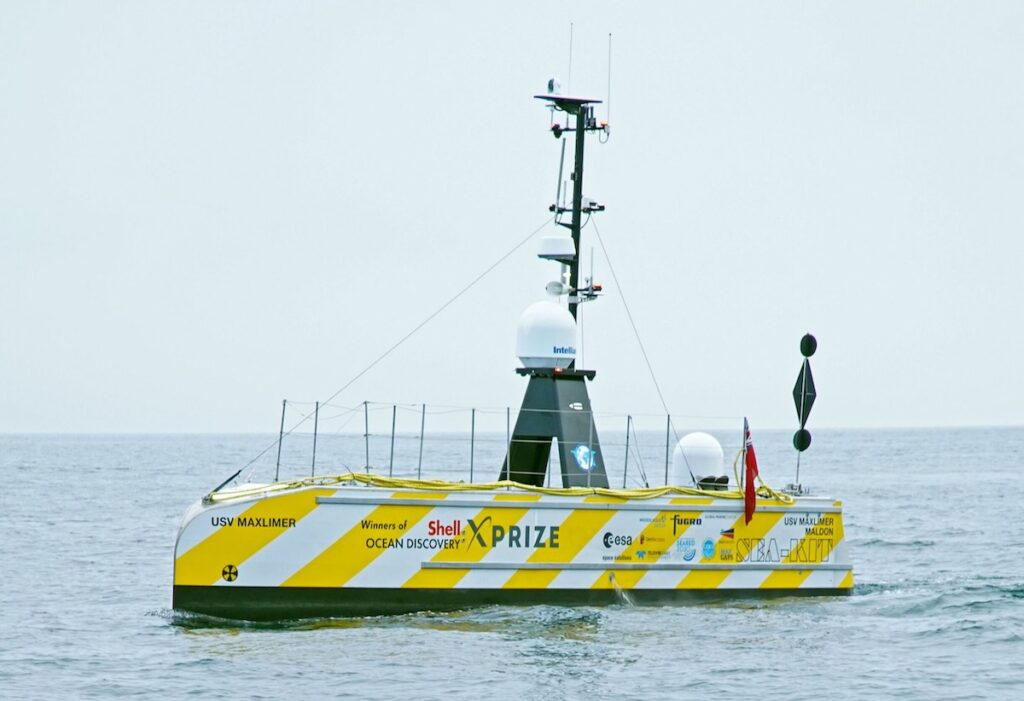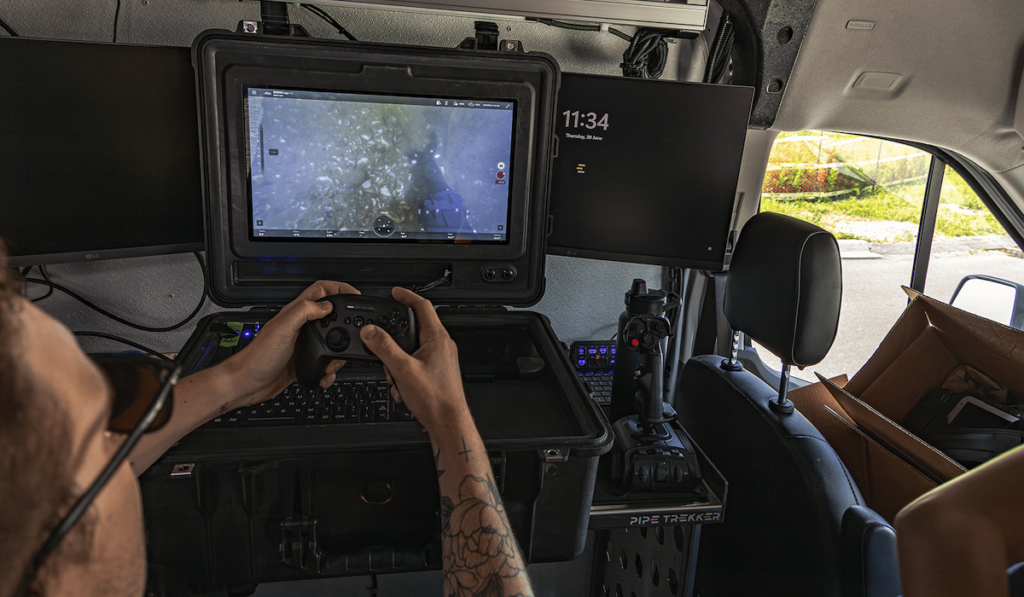Suppliers
Add your company
AI-Powered Maritime Autonomy & Remote Control Solutions for Government & Commercial Vessels

Marine Vehicle Management Technologies: Marine Autopilots, Remote Control Systems, and Simulation Solutions
If you design, build or supply ROV Controllers, create a profile to showcase your capabilities on this page
Products
Handheld & Portable Controllers for Precision ROV Piloting
ROV controllers enable precise human command of underwater vehicles in complex marine environments. While some controllers function as standalone units, others integrate with larger control station architectures or interface with autopilot systems that provide autonomous navigation support. This page explores key controller types, handheld, joystick-based, and tablet interfaces, and compares them with control methods such as marine autopilots and vessel-based surface control stations.
Applications of ROV Controllers in Marine Operations
ROV controllers are used across diverse mission types in ocean science, energy, and defense sectors:
Seafloor Mapping and Research
Controllers guide ROVs performing geospatial surveys, species cataloging, or environmental sampling. Precision is critical in these roles, often requiring responsive joystick control for maneuvering in rugged terrain.
Subsea Infrastructure and Pipeline Inspection
Operators use handheld or joystick-equipped controllers to pilot ROVs during detailed inspection of subsea assets. The controller must support fine-grain thrust and camera control, particularly in close proximity to structures.
Emergency and Recovery Missions
Tablet and joystick controllers are deployed in search-and-recovery scenarios, often from smaller vessels or rapid-response platforms. Haptic feedback modules and real-time telemetry are key for low-visibility environments.
Environmental and Fisheries Monitoring
Compact controllers with waterproof enclosures support mobile deployments for biodiversity surveys or ecological assessments. Wireless transmitter options allow for flexible launch setups.
Naval and Security Tasks
Military ROV operators use supervisory-capable controllers that interface with broader mission systems. Joysticks with override capability enable immediate manual control over automated modes when required.
Types of ROV Controllers
Handheld Controllers
Ergonomic, portable units are often used in inspection-class missions. These controllers typically feature buttons, triggers, and potentiometers to manage thrusters, lights, and cameras. Designed for single-user operation, they often integrate waterproof enclosures and may connect to higher-level systems via cable or wireless links.
Joystick Controllers
These range from simple analog sticks to programmable digital units with multi-axis control and adjustable tension. High-end models may include encoders and haptic modules, enabling precision navigation and force feedback for manipulator use or obstacle contact.
Tablet Interfaces
Tablet controllers feature graphical displays and touchscreen interaction, allowing operators to view telemetry, video feeds, and navigation overlays. Often combined with auxiliary joysticks or USB-connected modules, they are used in lightweight or mobile deployments.
Supervisory Controllers
For ROVs equipped with marine autopilots and onboard autonomy, these controllers allow operators to supervise automated functions such as depth holding or waypoint navigation. The interface typically includes options for manual override via joystick or button panels.
Integration With Surface Control Stations
Control stations are centralized systems for managing complex ROV operations. Installed aboard vessels or at shore facilities, they include video monitoring, navigation systems, and multiple input devices. While control stations and ROV controllers are distinct systems, many ROV controllers, such as joysticks and supervisory units, are designed to connect directly to control stations, forming a unified control environment.
This integration enables:
- Expanded Input Capabilities: Connecting handheld or joystick controllers to stations extends the functionality with additional displays or sensors.
- Shared Control: Stations support multi-user setups, allowing one operator to pilot the vehicle while another manages payloads.
- Enhanced Situational Awareness: Station-based deployments provide access to environmental overlays, sonar views, and system diagnostics.
- Controllers used in conjunction with control stations often serve as a manual interface layer within a broader digital command system.
Marine Autopilots and Their Role in ROV Control
Autopilot systems automate basic navigational tasks in ROVs, reducing the burden on human operators and enabling greater focus on mission-specific activities. Key capabilities include:
- Station Keeping: Maintaining fixed depth and position using thrusters and integrated navigation inputs.
- Path Following: Guiding the ROV along a set of waypoints or survey tracks.
- Supervisory Operation: Allowing operators to oversee autonomous behavior and intervene when necessary.
Some autopilot-equipped ROVs support override control, where an external controller (typically a joystick or handheld unit) can instantly take over in response to unexpected terrain, object detection, or task-specific needs.
Autopilots are especially useful during repetitive or long-duration missions such as:
- Pipeline and cable route surveys
- Environmental transects
- High-resolution seafloor mapping
Although autopilots can manage vehicle trajectory, manual controllers remain critical for manipulator use, obstacle navigation, and recovery operations.
Comparison of ROV Control Methods
| Method | Use Case | Portability | Interface Types | Manual Input Support |
| Handheld Controller | Inspections, education | High | Buttons, triggers | Full |
| Joystick Controller | Infrastructure, research | Medium | Analog/digital joystick | Full |
| Tablet Interface | Environmental surveys | High | Touchscreen, auxiliary joystick | Partial |
| Supervisory Controller | Long missions, military | Medium | Multi-input, override control | Conditional |
| Surface Control Station | Work-class operations | Low | Mixed (joystick, screens) | High (if connected) |
| Autopilot System | Repetitive tasks | Fixed | Software-based | Minimal to conditional |
Technical Features and Component Functions
ROV controllers often include a combination of the following:
- Analog Joysticks: For smooth, continuous thruster control
- Digital Joysticks: For predefined directional commands
- Potentiometers and Encoders: Allow variable input mapping and real-time feedback
- Triggers and Buttons: Used for tool deployment, light control, or camera activation
- USB Interfaces: Support integration with tablets or modular control platforms
- Wireless Transmitters: Enable untethered deployment options
- Waterproof Enclosures: Protect electronics in wet or corrosive conditions
- Tether Cables: Deliver power and communication signals between the controller and the ROV
ROV Navigation and Positioning Functions
Controllers also support interaction with ROV navigation and positioning systems:
- ROV Positioning: Integrates with USBL or DVL positioning systems to adjust vehicle location in real-time
- ROV Navigation: Allows operators to make course changes based on sensor data, visual cues, or mission overlays
Operators often rely on visual feedback from sonar and video, adjusting control inputs for terrain-following or avoidance in cluttered environments.
Payload and System Control via Controller Interface
Modern ROV controllers allow operators to manage additional systems and payloads, such as:
- ROV Grabbers and Manipulators: Control arms for picking up objects or interacting with structures
- ROV Lights: Adjust intensity and angle
- ROV Cameras: Adjust angle, or zoom
- Sampling Tools: Activate syringes, corers, or water samplers
- Mission Modules: Trigger environmental sensors or autonomous data loggers
- Feedback Modules: Provide tactile responses for manipulator strain or vehicle collision risk
Ergonomics and Operator Considerations
Human factors are essential in controller design, especially during long or complex missions:
- Grip Ergonomics: Reduce fatigue and allow precision control
- Customizable Layouts: Permit operators to configure input mapping to their workflow
- Adjustable Sensitivity: Enables finer or coarser input tuning based on the task
- Status Indicators: LED or on-screen feedback for command confirmation
These design principles ensure that operators maintain performance and situational awareness throughout extended underwater deployments.
Future Developments in ROV Control Interfaces
Emerging technologies are reshaping how ROV controllers are designed and used:
- Multi-vehicle Operation: Controllers capable of switching between multiple ROVs or coordinating swarms
- AI-Enhanced Interfaces: Suggesting actions or adjusting responsiveness based on mission phase
- Haptic Feedback Expansion: Improving tactile immersion for delicate manipulation
- Remote Control Over Networks: Using satellite communications (SATCOM) or fiber links to operate ROVs from distant locations
- Modular Controller Systems: Allowing users to assemble interfaces from interchangeable components
As underwater operations become more complex and data-rich, controller interfaces will continue to evolve toward more adaptive, integrated, and intelligent systems.















